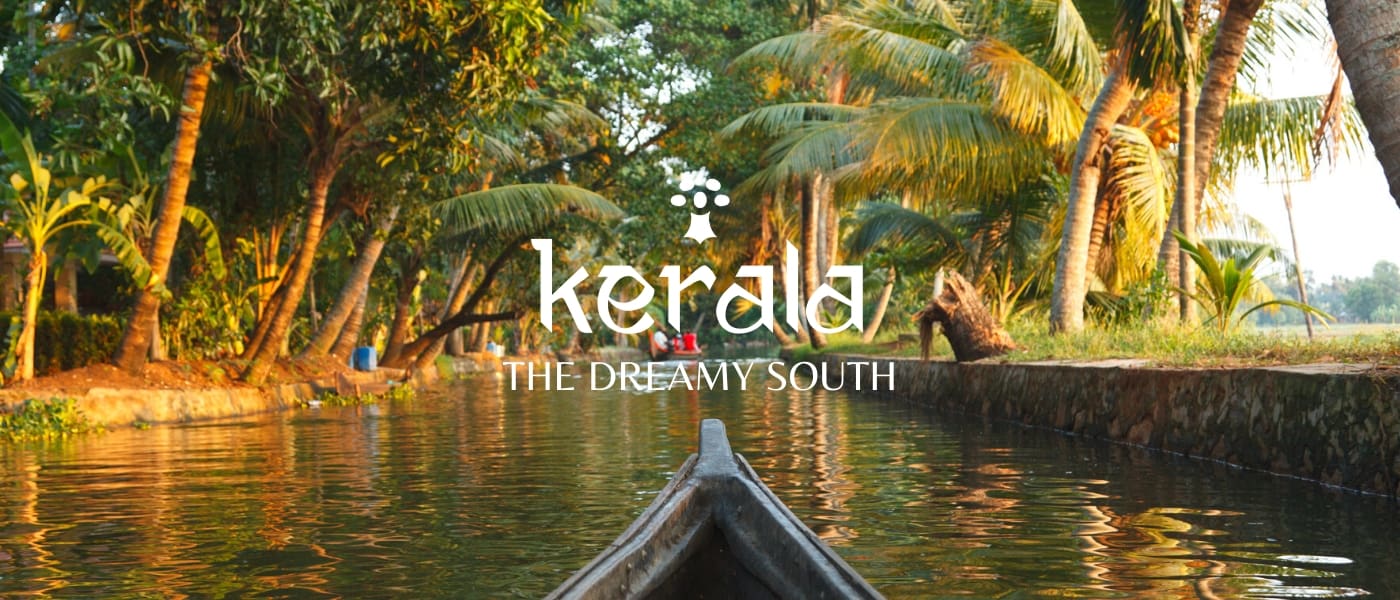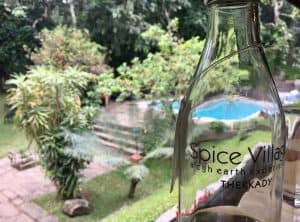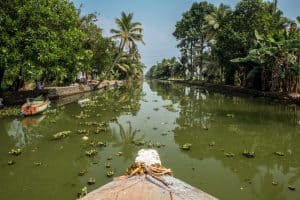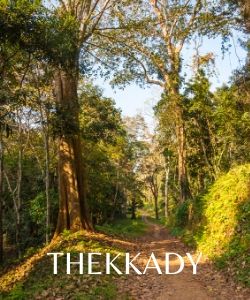
Plan your trip to Kerala
Try to compare Kerala to any other part of India, and you’d fail at the first hurdle.
Watch life pass by from Kerala’s infamous waterways: Its lakes, backwaters, fishing ports and beaches. Hunt elephants and birdlife with your camera lens or head up to hill stations to seek new levels of tranquility.
You could happily spend a while in this lush garden of India with its diverse culture and landscapes: In fact you may not want to leave at all.
Kerala Travel Guide
Read my Kerala Travel Guide to find out:
- What first time visitors to Kerala need to know
- Top places to visit in Kerala
- Where to Stay in Kerala
- How to get around in Kerala
- Responsible tourism operators in Kerala
- Safe travel tips
- … and much more!
Kerala Destinations
Kerala Travel Blogs

Thekkady Guide | Things to do in Thekkady & Periyar, Kerala
After several days exploring Kochi and Kerala’s backwaters, the charm of the near 100% humidity started to wear off. We decided it was time to head inland and uphill, in search

7 Reasons to Visit Kerala, India
While many visitors to India flock to the north of the country in search of palaces and tigers, we recommend a foray into southern India which is perfect for first time

Panchakarma in Kerala: Lessons From My Ayurveda Experience in India
Looking for a Panchakarma retreat in Kerala can be hard work, in this post I share about my Ayurveda Panchakarma in Kerala experience and share tips for finding the right

KERALA TRAVEL GUIDE | The Best of Kerala Without the Crowds
Our Kerala travel guide covers the best places to visit in Kerala and how to get the best out of this beautiful corner of India with fewer crowds, supporting local

Responsible Tourism Kumarakom, Kerala & a Stay at Coconut Lagoon
I’d like to thank Coconut Lagoon for hosting my stay with them. As always, the stories, experiences and opinions expressed here are purely my own. This post may contain affiliate
Travel to Kerala FAQ
Winter (October to March) is the best and most popular time to visit Kerala, when temperatures are pleasant (between 20 and 30 degrees celsius), and days are sunny and dry.
Prices and demand peak over the Christmas and New Year period, so book well in advance, or, better, come outside those dates.
Summer, from late March – June is sticky and humid, and not the best time to explore the backwaters due to the humidity and heat. It can be a good time to visit Kerala’s hill stations of Wayanad, Munnar and Thekkady, but book well in advance.
Kerala’s monsoon rains can be lashing and unforgiving, and last from sometime in June until October. If you’re travelling during this time, keep on top of local news for flooding or transport disruptions.
Trains connect coastal Kerala to the North to Karnataka, Goa and Mumbai. The main train station for Fort Kochi is at Ernakulam, and this is where all buses depart from too.
To travel inland, you’ll need to hire a car and driver, taxi, or take a bus. KSRTC (Kerala State Road Transportation Company) connects most cities but be prepared for windy roads and cavalier driving around the bends.
An unmissable part of travel around Kerala is on the water – catch a local ferry from Alleppey, charter a canoe tour from your backwaters hotel, or go for a cruise on one of Kerala’s infamous houseboats.
It’s possible to enjoy Kerala on most budgets – with simple, budget private rooms going from around 900 rupees (US$12) per night up to the sky is the limit to stay at some of Kerala’s finest resorts. Enjoy simple keralan vegetarian thalis served on banana leaves at roadside eateries, or feast on lobster and some of the finest sea food in India at award winning restaurants.
House boats are likely to be one of the more expensive options on your bucket list, and you do get what you pay for when it comes to quality.
Larger hotels and high end restaurants will accept credit cards, but Kerala is largely a cash economy. State Bank (SBI) ATM’s work well with foreign cards. Keep a back up of cash if you’re travelling to smaller towns as ATM’s sometimes run out of cash.
As with the rest of India, tap water is not safe to drink, but UV or Reverse Osmosis filtered water is fine. We use and trust Water to Go filter bottles which we travel with – buy one here.
Kerala’s backwaters are idyllic, but sadly they are becoming more and more polluted. Avoid using any single use plastic (including water bottles) while you’re on the backwaters as it usually ends up in them otherwise and however tempting it may seem, do not go for a swim!
Kerala is well-known for being one of India’s most progressive states, and solo female travellers may find that the going is a little easier here than in some parts of northern India, but we recommend all female travellers use their common sense and dress according to Indian standards.
Kerala has two main climatic region – the coast, and its hills/mountains. The coastal region is hot and humid year round, with winter being less hot (and most pleasant), summer bringing very high humidity and monsoon (June-Oct) bringing deluges of water. Kerala has had serious flooding the last two years during monsoon.
Hill stations are cool in winter, with mostly sunny days, and Munnar makes for a cool escape during the summer months of April and May, too, with daytime temperatures around the mid 20’s celsius vs the 35 degrees on the coast.




